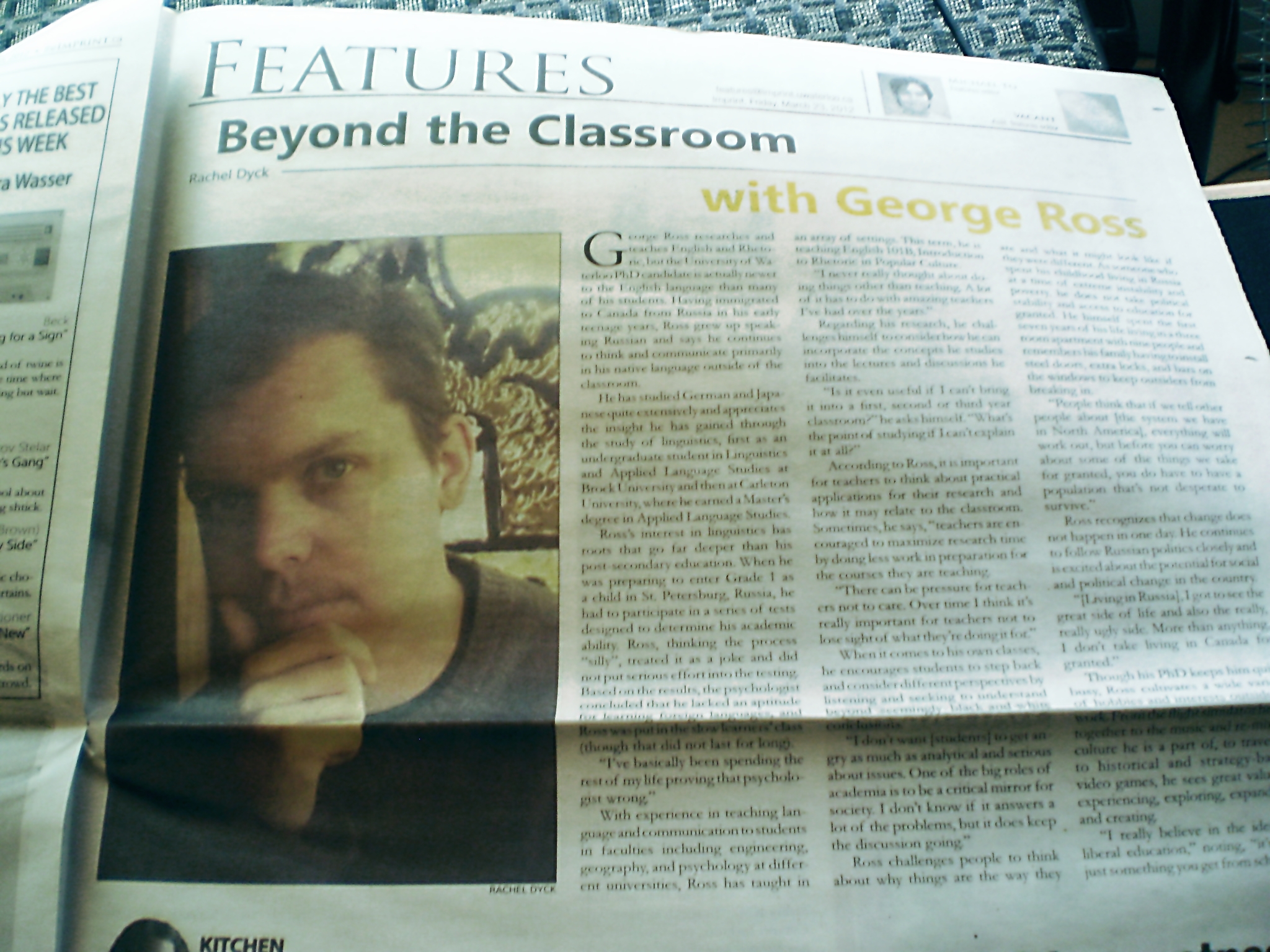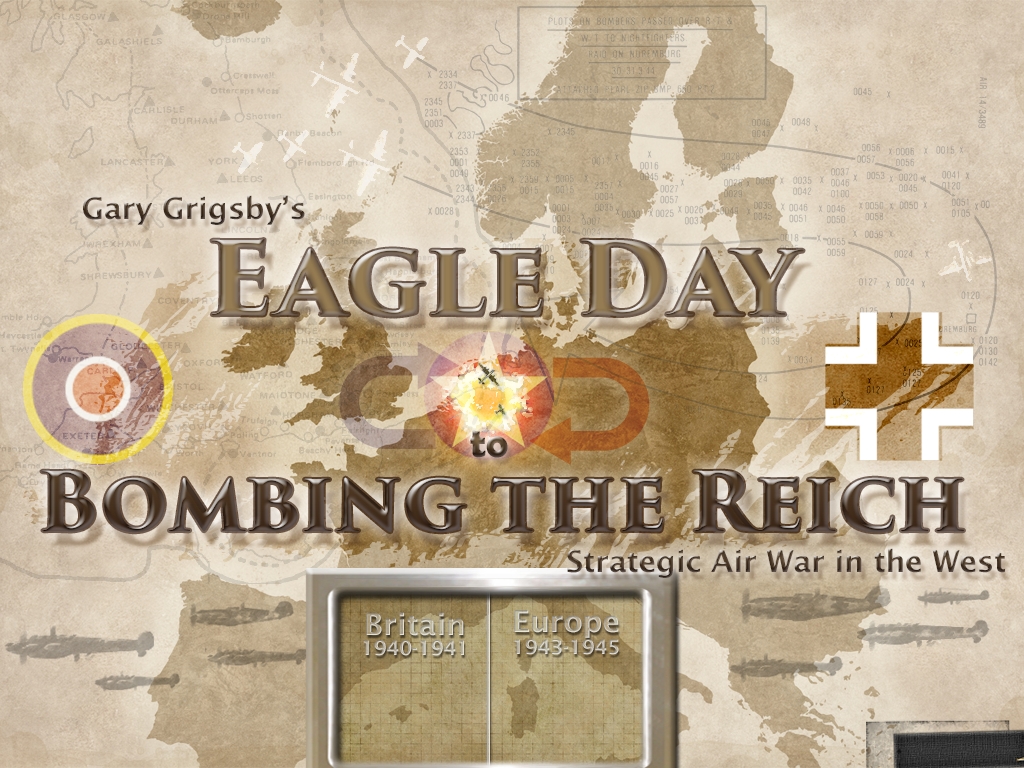





The Imprint – which is the student-run newspaper at the University of Waterloo, where I was teaching the English 101B (Introduction to Rhetoric) course at the time – published a profile of me in its March 23rd, 2012, based on an interview with student reporter Rachel Dyck. In the article, I candidly discuss my upbringing, my teaching philosophy, and my influences and interest – above all, reflecting on opportunities for education and social change in Canada.
I used the following set of slides for my invited talk to the narrative research group at the Institute for Creative Technologies (ICT), University of Southern California, on July 8th, 2015.
Between December 2018 and July 2019, I worked on a personal, non-commercial project – a modification of the game Armored Brigade (by Veitikka Studios and Matrix Games, originally published December 2018), which converted a game modeling a fictional conflict between the USSR and NATO during the Cold War into a historical simulation of events during the First and Chechen Wars of the 1990s. While relatively little-known in the West, these tragic conflicts have been a significant personal research interest – and for me, the game project was mainly an outlet for that research.
In September 2019, web magazine “The Wargamer” – a popular publication when it comes to this genre of games – ran a feature on my work. I was pleasantly surprised, as I had not solicited attention for this work and had worked on it mainly as a personal project, intended to fulfill a research interest and sharpen my skills in a variety of areas (from historical geospatial analysis, to graphics and game design)
The project was very ambitious and took over 400 hours of total work on my part – much of it going into creating an accurate 15×15 km map of Grozny, the capital of Chechnya. A unique challenge of this work had been the fact that during the wars of the 1990s, large parts of this city were destroyed – and had since been rebuilt very differently. Thus, the work was more complex than simply creating an in-game city – and I’d conducted a great deal of research, from finding maps to reading multiple first-hand memoirs of those who’d lived in the city just prior to or during the conflict, in order to present a map of Grozny as it once was.
Other aspects of the project included revising the game mechanics to suit the kind of warfare seen in the Chechen Wars (particularly in Grozny), which were mainly asymmetrical and fought in close urban conditions – as opposed to the wide open conflicts between equal sides that Armored Brigade was built to model. After an initial version released in June 2019, I then spent the following month creating a set of 10 scenarios based on perhaps the war’s most difficult episode – the ill-fated Russian assault into the center of Grozny on New Year’s Eve 1994. Focusing on the actions of the 131st Motor Rifle Brigade and their leader, Col. Ivan Savin, the “Caliber-10 Mission Pack” allowed players to consider that scenario from both sides of the conflict. Part of the effort involved translating some of the Russian-language interviews, journals and radio logs of those who participated in this conflict – some of which had never been translated into English previously.
Working on this project gave me a particularly interesting perspective on what I could accomplish independently – having worked on every aspect of it from start to finish, from research to data editing to graphics design.
In 2015, popular naval simulation website SUBSIM.COM published a review I had written of a then-new game – Rule The Waves by NWS Publishing. I wrote:
Rule the Waves is a very sophisticated game, made with a lot of care and forethought – it provides a great deal of detail but, just as importantly, it manages that detail cleverly […] RTW offers a truly dynamic campaign and a realistic model of ship combat. Its killer feature – the ability to design and construct your own ships and fleets – works brilliantly, and provides a whole new layer of depth.
An ongoing “virtual reconstruction” project, which I had started in 2016 based on modifying existing work (both commercial and non-commercial, such as that of the VnW Team), is a recreation of flight operations in Laos during the “Secret War” of the 1960s using Microsoft’s Flight Simulator X.

This has involved altering many aspects of the game – from “repainting” modifying the simulator’s airplanes and traffic, to creating dozens of new airfields. The history of aviation in Laos during the 1960s is particularly unique since, during this period, this Southeast Asian country was next door to the Vietnam War – and while officially neutral to the US, it saw American-supplied militias wage a sustained fighting effort against common opponents. In order to support these forces in a mountainous country with very few roads, hundreds (approximately 350) of small airstrips were constructed.
Much of the work on this “virtual reconstruction” has thus focused on reproducing these strips – which, in turn, meant a great deal of research – especially challenging, seeing that the vast majority of these airstrips have been swallowed up by the jungle in the 5 decades since. Using period photographs, topographic maps, and modern satellite imagery, I have been able to reconstruct (or at least plausibly imagine) approximately 90 of these over 3 years.
The images below show some of the results.
The following shows work I have produced for the simulation game title “Combat Mission: Red Thunder”. In it, I have taken a historical aerial photo and used it to recreate a detailed 3D map of the village of Golynki in the Smolensk Oblast of Russia as it may have looked during the war in 1943. It is fully functional in the game. This project took approximately 45 hours of work.
Below are some selected screenshots from products, test platforms, and tools for text tailoring and production of interactive narratives that I have participated in designing. Partners on the projects below included the University of Waterloo Games Institute, HealthDoc Research/Rhetoritech Inc., DPS Health (Los Angeles), Toronto General Hospital and Sunnybrook Hospital (Toronto), Deloitte Canada, and Microsoft Research.
The following images are a sampling of my interface design work for the simulation game “Gary Grigsby’s Eagle Day to Bombing the Reich”, originally published by Matrix Games in 2009. These were created in December 2016 by myself, using Adobe Photoshop and stock graphics, and many of these elements were subsequently incorporated into the February 2018 official update for the game.

The work – titled “Visual Improvement Package (VIP)” – included menu screens, interface elements, map graphics, and animated sprite art.
The following examples feature some of my work in map art, historical visualization, and geospatial analysis – mainly for my “digital archeology of conflict” work, where I use data from historical documents and images mapped onto present-day geospatial tools to explore and analyze events. The images below are from my projects that dealt with World War II and Vietnam War history.